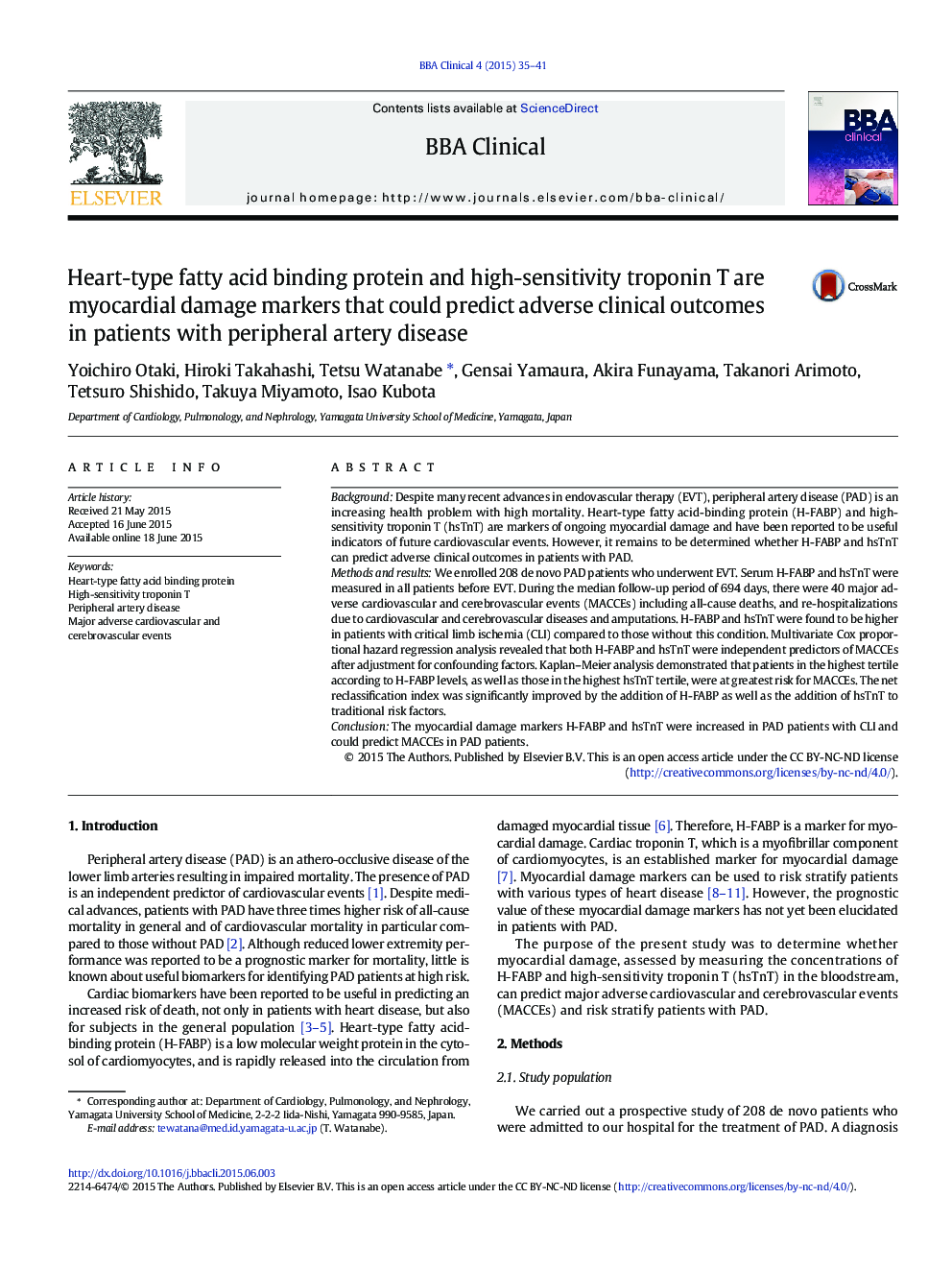| Article ID | Journal | Published Year | Pages | File Type |
|---|---|---|---|---|
| 2773064 | BBA Clinical | 2015 | 7 Pages |
BackgroundDespite many recent advances in endovascular therapy (EVT), peripheral artery disease (PAD) is an increasing health problem with high mortality. Heart-type fatty acid-binding protein (H-FABP) and high-sensitivity troponin T (hsTnT) are markers of ongoing myocardial damage and have been reported to be useful indicators of future cardiovascular events. However, it remains to be determined whether H-FABP and hsTnT can predict adverse clinical outcomes in patients with PAD.Methods and resultsWe enrolled 208 de novo PAD patients who underwent EVT. Serum H-FABP and hsTnT were measured in all patients before EVT. During the median follow-up period of 694 days, there were 40 major adverse cardiovascular and cerebrovascular events (MACCEs) including all-cause deaths, and re-hospitalizations due to cardiovascular and cerebrovascular diseases and amputations. H-FABP and hsTnT were found to be higher in patients with critical limb ischemia (CLI) compared to those without this condition. Multivariate Cox proportional hazard regression analysis revealed that both H-FABP and hsTnT were independent predictors of MACCEs after adjustment for confounding factors. Kaplan–Meier analysis demonstrated that patients in the highest tertile according to H-FABP levels, as well as those in the highest hsTnT tertile, were at greatest risk for MACCEs. The net reclassification index was significantly improved by the addition of H-FABP as well as the addition of hsTnT to traditional risk factors.ConclusionThe myocardial damage markers H-FABP and hsTnT were increased in PAD patients with CLI and could predict MACCEs in PAD patients.
